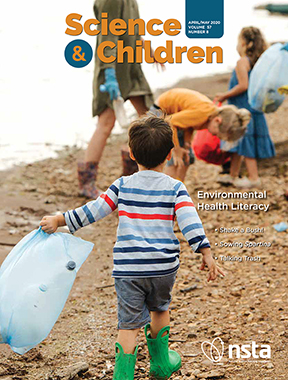I. Best of Times, Worst of Times
With the extended closing of schools resulting from the coronavirus pandemic, it is possible that some school district may need to be closed for the balance of the academic year. In any case, science teachers need to make sure their biological, chemical and physical hazards are in fact safely attended to as appropriate for an extended shut-down. Teachers may need at some juncture to be able to have access to their labs, storerooms and prep rooms before the summer break begins. In this way, teachers need to contact their administrators for permission to return to their building’s assigned lab areas to make sure they are prepared and safer for summer custodial cleaning. Obviously, this action will depend on the future developments with the virus and governmental mandates relative to employees entering their workplaces.
II. What Needs to be Done?
Before leaving science labs for an extended amount of time, there are a number of actions which need to be taken to address potential laboratory hazards and resulting risks. The following is an abbreviated list of suggested housekeeping actions which should be taken:
A. Chemical Hazards – (corrosives, flammables, toxins, etc.)
• Label all chemical containers fully. Make sure they follow labeling requirements noted in the department’s Chemical Hygiene Plan.
• Properly dispose of chemicals and radioactive wastes. Old and unused chemicals should be disposed of promptly and properly as hazardous waste.
• Provide a specific storage space with signage for each chemical, and ensure all chemicals are removed from the lab and prep. room open areas.
• Store volatile toxins and odoriferous chemicals in ventilated cabinets. Make sure chemical storeroom ventilation is operational during non-occupied time.
• Store flammable liquids in approved flammable liquid storage cabinets.
• Store hazardous chemicals and wastes in secondary containment. Secondary containment capacity must be 110% of the largest container or 10% of the aggregate volume of all containers, whichever is larger
• Never store or place chemicals on the floor.
• Never stack chemicals and always store upright.
• Make sure chemical fume hoods are cleared of all contents: e.g. – chemicals, equipment, etc.
• Request facilities department has fume hoods inspected by a licensed contractor meeting the requirements of NFPA 45.
• Properly secure all compressed gas cylinders.
• Have an up-to-date inventory of the chemical and biological agents in the
laboratory. Include on the inventory the room locations of the materials (such as in a freezer, safety cabinet, or shelf).
B. Biological Hazards – (microbes, plants, animals and genetically modified agents)
• Appropriately disinfect work surfaces.
• Properly dispose of biological waste; e.g. autoclave microbes.
• Sterilize glassware and other equipment used with biological waste.
• Set up schedule for care of live plants and animals during the shut down.
• Address chemical hazards as noted in A. Chemical hazards above.
C. Physical Hazards – (glassware/plastic-ware, projectiles, gas leaks, heating devices, batteries, electrical sources, power tools, etc.)
• Check glassware for star cracks, chips, or cracks, and promptly discard or repair any unsafe glassware.
• Appropriately store all glassware, plastic-ware and other lab equipment in cabinets or on shelving.
• Make sure batteries are stored appropriately.
• Lockout all power sources for power tools and other equipment.
• Use master gas shut down controls to prevent gas leaks.
• Disconnect any extension cords or other power sources.
D. General housekeeping
• Provide direct access to emergency equipment, showers, eyewash stations, and exits.
• Clear all clutter and obstructions from work areas (lab work benches, etc.).
• Properly store all items in the lab, storeroom, prep room, etc.
• Look inside all cabinets for leftover waste and any storage hazards.
• When storing items on shelves, the top of the items should be greater than 18” from the ceiling to ensure adequate coverage by sprinkler heads in the event of a fire (NFPA fire code).
• Keep all aisles, exits, etc. clear of all chemicals and other obstructions.
• Remove all clothing, bags, and other personnel items.
• Clean out refrigerators and dispose of unwanted materials appropriately.
• Make sure all floors and work surfaces are dry. Check for water leaks under sinks, etc.
• Keep all drawers and cabinets closed.
• Check for trip and slip hazards (e.g. oil leaks from pumps, electrical cords, hoses, etc.) across walkways.
• To avoid the presence of noxious fumes arising from the sewer lines, a liter of water should be poured down each laboratory drain at least monthly to ensure that the drain trap is functional.
• Hallway doors of all laboratories must remain closed and locked to maintain the proper negative airflow from the hallways into the labs and general security.
• Inspect faucets to see that they work properly and do not drip.
• Make sure that hose/tubing connections on faucets and other items are secure, and that hose/tubing is not brittle. Immediately have any old or degraded hose/tubing replaced.
• Store items so they do not block access to the fire extinguisher(s), safety equipment, and electric panel boxes.
• Make a list of items like engineering controls (eyewash, shower, fume hood, fire extinguishers, etc.) that need to be repaired and submit a work order to the facilities department.
• Recycle paper and cardboard properly where it will be promptly removed.
• Unused or spare equipment should be stored in a designated storage room.
III. In the End
This blog has focused on specific housekeeping areas needing attention during summer or other extended shut downs. Check out another resource by the International Technology and Engineering Educators Association (ITTEA) “Technology and Engineering Teacher” Journal’s “Safety Spotlight” column for April 2020 titled: “Preparing Makerspaces and STEM Labs for Summer Break: The OAH Approach.” (See page 26:
https://www.iteea.org/Publications/Journals/TET/170479.aspx). This safety column includes additional administrative and organization considerations as well as housekeeping that are applicable when shutting down science lab operations for extended periods of time.
Submit questions regarding safety to Ken Roy at safersci@gmail.com or leave him a comment below. Follow Ken Roy on Twitter: @drroysafersci.
 Join us on Thursday, April 16, 2020, starting at 7:00 pm ET to celebrate Earth Day with NSTA.
Join us on Thursday, April 16, 2020, starting at 7:00 pm ET to celebrate Earth Day with NSTA. Join us on Thursday, April 16, 2020, starting at 7:00 pm ET to celebrate Earth Day with NSTA.
Join us on Thursday, April 16, 2020, starting at 7:00 pm ET to celebrate Earth Day with NSTA. Join us on Thursday, April 16, 2020, starting at 7:00 pm ET to celebrate Earth Day with NSTA.
Join us on Thursday, April 16, 2020, starting at 7:00 pm ET to celebrate Earth Day with NSTA. Join us on Thursday, April 16, 2020, starting at 7:00 pm ET to celebrate Earth Day with NSTA.
Join us on Thursday, April 16, 2020, starting at 7:00 pm ET to celebrate Earth Day with NSTA.




